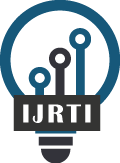|
International Journal for Research Trends and Innovation
International Peer Reviewed & Refereed Journals, Open Access Journal
ISSN Approved Journal No: 2456-3315 | Impact factor: 8.14 | ESTD Year: 2016
Scholarly open access journals, Peer-reviewed, and Refereed Journals, Impact factor 8.14 (Calculate by google scholar and Semantic Scholar | AI-Powered Research Tool) , Multidisciplinary, Monthly, Indexing in all major database & Metadata, Citation Generator, Digital Object Identifier(DOI)
|
Issue: October 2025
Volume 10 | Issue 10
Review Result and Publication of Paper within : 2-3 days
Click Here For more DetailsFor Authors
Forms / Download
Published Issue Details
Editorial Board
Other IMP Links
Facts & Figure
Impact Factor : 8.14
Issue per Year : 12
Volume Published : 10
Issue Published : 113
Article Submitted : 18099
Article Published : 7764
Total Authors : 20527
Total Reviewer : 747
Total Countries : 142
Indexing Partner
Licence
This work is licensed under a Creative Commons Attribution-NonCommercial 4.0 International License







|
Published Paper Details
|
|
| Paper Title: | Radiation Safety in Radiography and Imaging Technology: Developing Best Practices for Patient and Healthcare Worker Protection |
| Authors Name: | Mr. Amit Bisht , Ms. Rashmi Pandey |
| Download E-Certificate: | Download |
| Author Reg. ID: |
IJRTI_187230
|
| Published Paper Id: | IJRTI2306109 |
| Published In: | Volume 8 Issue 6, June-2023 |
| DOI: | |
| Abstract: | Radiography and imaging technology play a critical role in modern healthcare, providing vital diagnostic information to support patient care. However, the use of ionizing radiation in these technologies raises concerns about radiation safety and the associated risks of exposure. Ionizing radiation can damage living tissue and increase the risk of cancer and other adverse health effects (IAEA, 2014). Thus, it is essential to ensure that radiation doses are kept as low as reasonably achievable (ALARA) and that proper radiation safety protocols are followed to minimize radiation exposure to both patients and healthcare workers. The International Commission on Radiological Protection (ICRP) has established principles for radiological protection in medicine, emphasizing the need to balance the benefits of radiation exposure with the potential risks (ICRP, 2018). The ICRP has recommended that healthcare professionals take steps to reduce radiation exposure by using appropriate shielding, selecting appropriate imaging modalities, and implementing imaging protocols that minimize radiation doses. These guidelines are critical in ensuring patient and staff safety while maintaining the quality of diagnostic information obtained through radiography and imaging technology. However, studies have shown that there is still a need for improved radiation safety awareness and practices among radiology technologists and other healthcare professionals (Almalki et al., 2021). In addition, new technologies, such as interventional radiology, present unique radiation safety challenges that require specialized training and protocols (Chou et al., 2020). Therefore, ongoing research and education on radiation safety are critical to ensure that healthcare professionals can safely and effectively use radiography and imaging technology to support patient care. This research proposal aims to investigate radiation safety in radiography and imaging technology, focusing on identifying areas of risk and developing strategies to improve radiation safety protocols. This study will include a comprehensive literature review of current radiation safety guidelines, as well as an analysis of current radiation safety practices in healthcare facilities. Additionally, this study will investigate the effectiveness of current radiation safety training programs and identify areas for improvement. Ultimately, this research aims to contribute to the development of evidence-based guidelines for radiation safety in radiography and imaging technology, which can be disseminated to healthcare facilities and professionals. |
| Keywords: | X ray Machine, Computed Tomography (CT Scan ), ICRP,ALARA |
| Cite Article: | "Radiation Safety in Radiography and Imaging Technology: Developing Best Practices for Patient and Healthcare Worker Protection", International Journal of Science & Engineering Development Research (www.ijrti.org), ISSN:2455-2631, Vol.8, Issue 6, page no.713 - 716, June-2023, Available :http://www.ijrti.org/papers/IJRTI2306109.pdf |
| Downloads: | 000205109 |
| ISSN: |
2456-3315 | IMPACT FACTOR: 8.14 Calculated By Google Scholar| ESTD YEAR: 2016 An International Scholarly Open Access Journal, Peer-Reviewed, Refereed Journal Impact Factor 8.14 Calculate by Google Scholar and Semantic Scholar | AI-Powered Research Tool, Multidisciplinary, Monthly, Multilanguage Journal Indexing in All Major Database & Metadata, Citation Generator |
| Publication Details: |
Published Paper ID: IJRTI2306109
Registration ID:187230
Published In: Volume 8 Issue 6, June-2023
DOI (Digital Object Identifier):
Page No: 713 - 716 Country: Nainital, Uttarakhand, India Research Area: Health Science Publisher : IJ Publication Published Paper URL : https://www.ijrti.org/viewpaperforall?paper=IJRTI2306109 Published Paper PDF: https://www.ijrti.org/papers/IJRTI2306109 |
| Share Article: | |
|
Click Here to Download This Article |
|
| Article Preview | |
|
|
|
Major Indexing from www.ijrti.org
| Google Scholar | ResearcherID Thomson Reuters | Mendeley : reference manager | Academia.edu |
| arXiv.org : cornell university library | Research Gate | CiteSeerX | DOAJ : Directory of Open Access Journals |
| DRJI | Index Copernicus International | Scribd | DocStoc |
ISSN Details
 |
 |
ISSN: 2456-3315
Impact Factor: 8.14 and ISSN APPROVED,
Journal Starting Year (ESTD) : 2016
DOI (A digital object identifier)
 Providing A digital object identifier by DOI.ONE How to Get DOI? |
Conference
Open Access License Policy
Important Details
Join RMS/Earn 300
WhatsApp
Click Here
Click Here
Indexing Partner |
|||
| Copyright © 2025 - All Rights Reserved - IJRTI | |||






